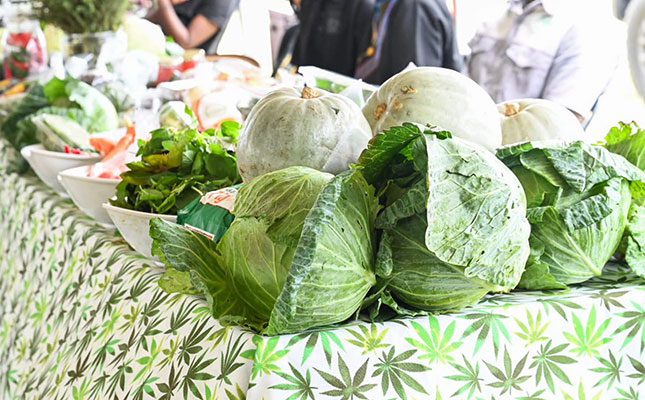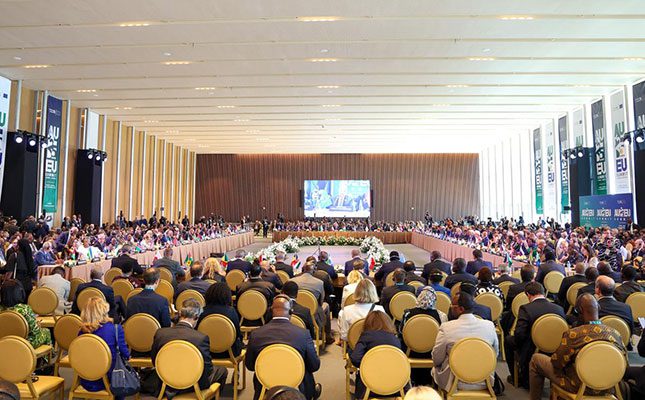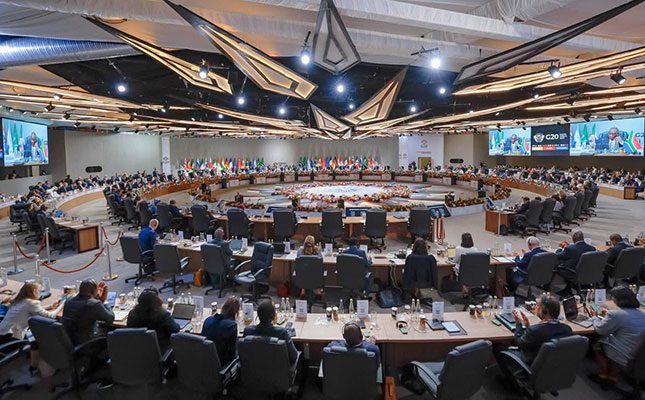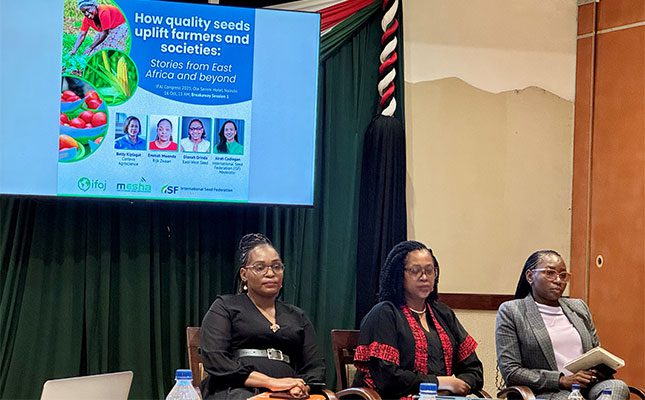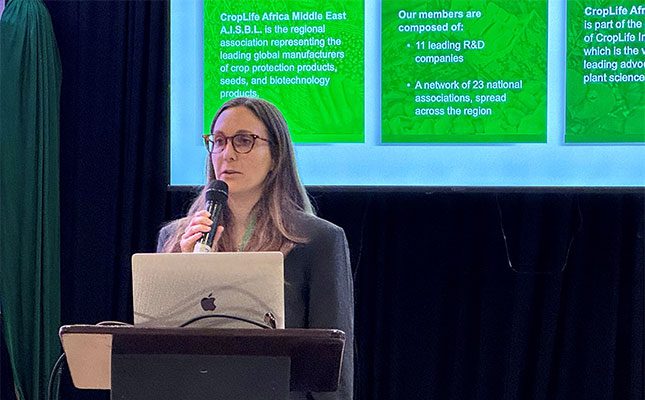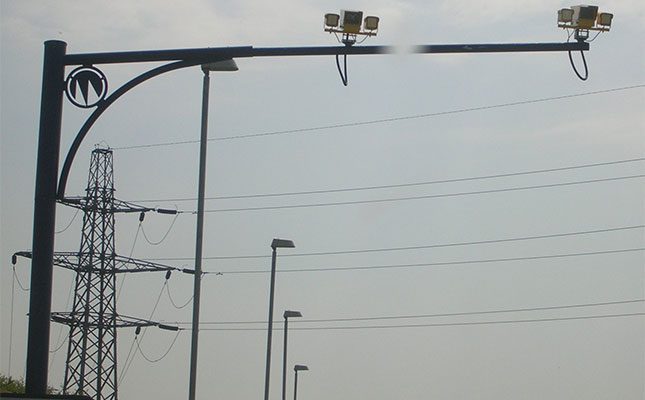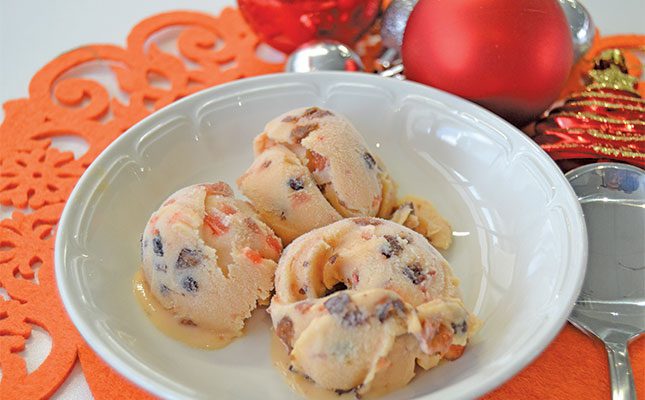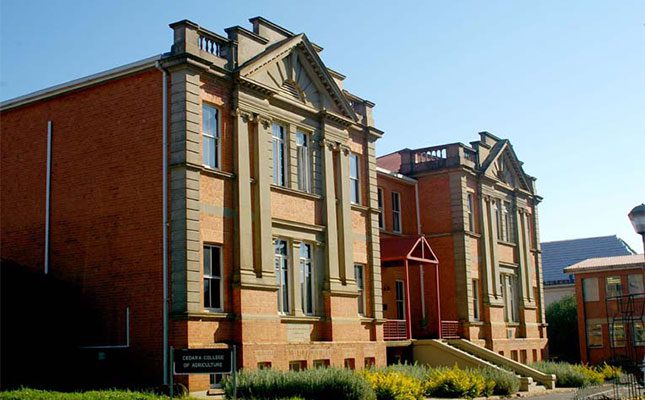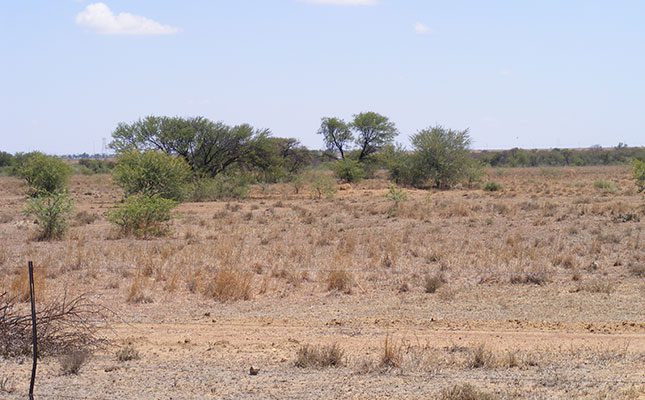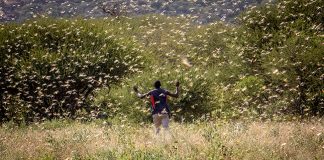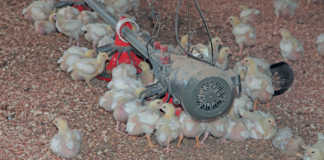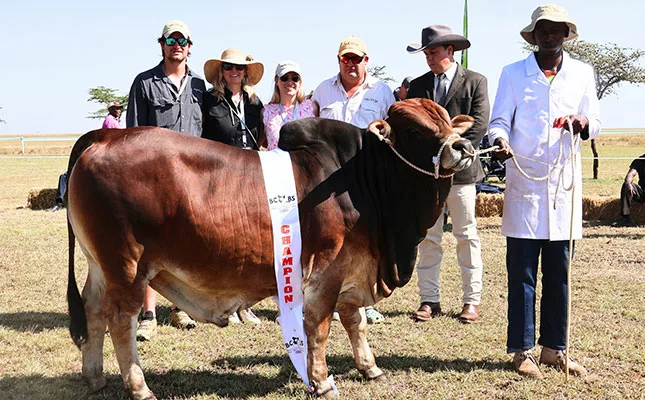
Photo: Martenique Scott
More than 200 head of cattle were paraded before an international audience of breeders, ranchers, and buyers from across Africa and Latin America at the event.
Show judge PJ Budler, who has judged livestock on nearly every continent, said the event held near the town of Rumuruti, Laikipia, was unlike anything he had seen before.
“Over 200 head of Boran bulls, females, and steers from across [Kenya] were the treat for visitors from Brazil, Namibia, Paraguay, South Africa, South Sudan, Tanzania, Uganda, the US, Zimbabwe, and all over Kenya,” he said.
Functionality first
For Budler, the most impressive aspect of the show was the quality of the animals themselves. “It seldom or never [happens] where a show of this scale, any breed, anywhere, is as fundamentally functional in terms of feet, udders, testicles, secondary sexual traits, and fleshing ability,” he said.
He praised the Kenyan Boran’s unique genetic history: “[Over 1 000] years of ‘aggravated natural selection’, a term coined by Johann Zietsman, and a genius tweak by the pioneers of the Kenya Boran have developed as functional a breed of livestock as I’ve ever seen.
“It is no wonder that the Kenyan breeders can have sizable herds of cattle consisting of productive females 15 years and older.”
Highland Laikipia is in the heart of Kenya’s improved Boran country. From the early years of the 20th century, local ranchers trekked Boran-type cattle down from the regions of what is now southern Ethiopia, Somalia, and northeastern Kenya.
“Kenya today is still the home of the Boran,” BCBS Chairperson Mark Myatt-Taylor . He also runs the prominent Woragus Boran Stud.
“Our Borans are raised in their natural environment and managed with good old-fashioned stockmanship. They are medium-framed animals with width and length. They are well-muscled, spring of rib with width between the eyes – not to mention their great mothering ability, milk and fertility, and tick resistance.
Despite Kenya being the original home of the improved Boran, there are only around a dozen studs remaining in the country, but standards for registration at inspection are stringently high.
Budler summed up the Boran’s global advantage in a simple formula: adaptability + functional efficiency + fertility + longevity = profitability.
An African breed with global demand
The Boran is now drawing the attention of cattle industries worldwide for its fertility, resilience, and carcass quality.
“Boran is the tropically adapted solution to fertility, longevity, udder quality, foot integrity, high inherent body condition, and sexual dimorphism,” Budler explained.
For him, seeing the breed in its homeland was key: “To fully understand Boran, I had to see them in Kenya. Co-mingling with the Big Five, with herdsmen, at altitude, and on the Equator.”
High standards in the ring
The show ring at Woragus farm, one of the leading stud properties, saw top-quality cattle across classes. Budler and veteran Kenyan stockman Giles Prettejohn praised the presentation of animals and the discipline of the judging.
“I thought the standard of Boran was excellent, especially the bulls. I don’t think we have seen such a high percentage of ‘masculine’ bulls at such a young age before,” Prettejohn explained.
He also noted that heifers that were over-conditioned were correctly marked down. “A heavy brisket in a two-year-old will damage the heifer’s breeding capability, and it should not be encouraged. I hope breeders will learn from this.”
Budler was similarly firm: while some heifers with excellent conformation were penalised for hoof issues linked to feeding, the overall quality of heads, feet, and structural soundness reinforced the Boran’s reputation as a truly functional breed.
Studs in the spotlight
While Woragus dominated as host, other studs also stood out. Ol Pejeta , home to Kenya’s largest Boran herd, secured five first prizes and came third overall. Suyian Ranch, one of Kenya’s most respected studs, finished an impressive second overall on points, confirming its consistency and depth across the classes.
Sosian Boran Stud was also highly ranked and distinguished itself in the younger heifer classes. Sosian 3245 claimed first place in Class 1 (heifers under two years), while other Sosian entries ranked among the top four in several divisions.
Wachadima, a newcomer to the show, impressed by winning the trophies for Best New Exhibitor and for the fattest steer, a double first for a debut performance by a breeder to watch in years ahead.
Meanwhile, Stanley & Son stud, among the oldest names in Boran breeding, performed well in multiple classes, with Stanley 2882 and Stanley 2826 both placing.
Record-breaking auction
Following the show, all eyes turned to the sales ring. Renowned South African auctioneer Andrew Miller kept the crowd energised as bids soared. A bull fetched KES1,1 million (about R147 000), while a group of three heifers set a record at KES1,3 million (R173 000).
Marketing and global broadcasting were spearheaded by Realtime Agri’s Martinique Scott, whose online platform Meerkat has dramatically promoted the visibility of Boran cattle across Africa. Judging and the auction, servicing bidders across Africa, were live streamed, a historic first for Kenya.
Results and trophies
The 2025 Boran Cattle Show produced a slate of champions across multiple classes, including:
- Show Champion Bull: Woragus 1697 by KPO 4784, which also won Champion Junior Bull, the Alistair Reith-Hennessy Memorial Jug, the Harold White Memorial Trophy, and the Almatix Trophy.
- Reserve Champion Junior Bull: Kifuku Estate 24-28 by 124.
- Champion Female: Kifuku Estate 22-11 by KPO 1689, winner of the Brian Hartley Plate and the Cooper Trophy.
- Reserve Champion Female: Frontier Cattle 2328 by 863, winner of the George Aggett Memorial Trophy.
For the BCBS, this year’s show was a celebration of tradition and a glimpse into the breed’s future, and the mix of local ranchers and international breeders underscored the Boran’s growing global relevance.
The message was clear: Kenya’s Boran is no longer just a national treasure. It is a global solution for sustainable, profitable cattle production.
“The Kenyan Boran is not only a story of heritage but also of the future of the global beef industry,” Budler concluded.


